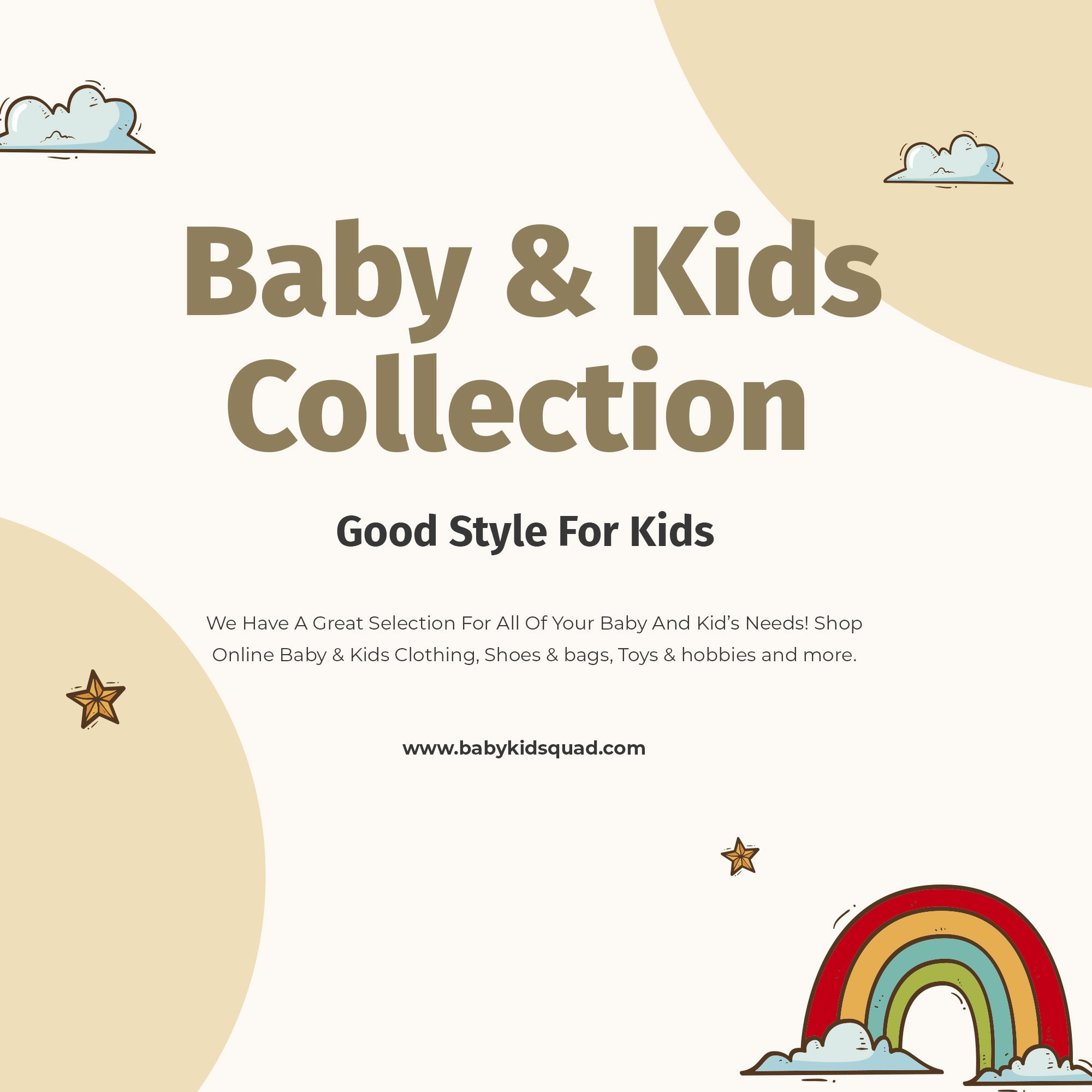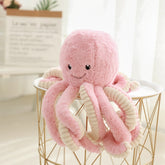How to Wash Plush Animals: Keeping Your Child's Favorites Fresh and Clean
Table of Contents
- Introduction
- Understanding the Need for Cleaning Plush Animals
- Preparing to Wash Plush Animals
- Hand Washing Plush Animals
- Machine Washing Plush Animals
- Special Considerations for Delicate Plush Animals
- Maintaining Plush Animals Between Washes
- Conclusion
Introduction
Do you remember the first time you noticed a mystery stain on your child's favorite plush animal? Whether it's a beloved teddy bear or a cuddly bunny, these furry friends often become a child's constant companion, enduring countless adventures and, unfortunately, collecting dirt and germs along the way. In fact, studies have shown that plush toys can harbor a surprising amount of bacteria, making regular cleaning essential for maintaining hygiene and ensuring the longevity of these cherished items.
At Baby Kid Squad, we understand the importance of keeping your child's plush companions clean and safe. Our mission is to make parenting easier and more stylish, and that includes providing helpful tips on caring for the products we offer. In this blog post, we will guide you through the best practices for washing plush animals, whether by hand or machine, ensuring they remain fresh and snuggly for years to come.
By the end of this article, you’ll know how to wash plush animals effectively, how often to clean them, and which cleaning methods are best suited for different types of stuffed toys. Plus, we’ll share insights into the materials you'll need and the steps to take for spot cleaning, hand washing, and machine washing. Let’s dive in!
Understanding the Need for Cleaning Plush Animals
The Importance of Cleanliness
Plush animals, while adorable, can be a breeding ground for allergens, dust, and germs. According to pediatric experts, it is recommended to wash stuffed toys regularly, especially if your child has allergies, asthma, or has been sick. Cleaning these toys not only helps eliminate harmful bacteria but also improves the overall condition and lifespan of the toys.
How Often Should We Wash Plush Animals?
As a general guideline, plush toys that are frequently used—such as those that go to bed with your child or travel with them—should be washed weekly. For other toys, a monthly cleaning is usually sufficient. However, if your child has been ill or if the toy has been exposed to dirt or food, it’s best to clean it immediately.
Preparing to Wash Plush Animals
Check for Care Labels
Before starting the washing process, we recommend checking for any care labels on the plush animals. These labels often provide essential information about the cleaning method that is safe for each specific toy. If the label is missing or faded, don’t worry; we can still determine the best approach based on the toy's materials.
Assess the Materials
Identifying the material of the plush animal is crucial. Most plush toys are made from synthetic fibers that can withstand washing, but some may have delicate parts, such as glued-on eyes or sequins. For example, toys filled with foam balls or plastic pellets may require different cleaning methods than those filled with traditional stuffing.
Gather Your Supplies
Having the right materials on hand will make washing plush animals easier. Here’s what you’ll need:
- Mild laundry detergent (we recommend eco-friendly options to protect your child's skin)
- A mesh laundry bag or pillowcase
- A soft brush for spot cleaning
- Baking soda for odor removal
- Clean towels for drying
Hand Washing Plush Animals
Step-by-Step Guide
Hand washing is often the safest method for cleaning plush toys, especially those that are old or have delicate parts. Here’s how to do it:
- Prepare the Cleaning Solution: Fill a sink or large bowl with cool water and add a small amount of mild detergent. Mix it until it’s well-dissolved.
- Spot Cleaning: If there are visible stains, use a soft brush or a cloth to gently dab the stained area with the soapy water. Be careful not to soak the toy too much.
- Submerge the Plush Toy: Slowly submerge the stuffed animal in the soapy water, gently squeezing it to allow the detergent to penetrate the fabric. Avoid wringing or twisting the toy to prevent damage.
- Rinse Thoroughly: Drain the soapy water and refill the sink or bowl with clean, cool water. Rinse the plush animal until all soap is removed, ensuring the water runs clear.
- Remove Excess Water: Gently squeeze out excess water without twisting or wringing the toy. You can also roll it in a clean towel to absorb more moisture.
- Air Dry: Lay the plush animal flat on a drying rack or hang it in a well-ventilated area. Avoid direct sunlight, as it can fade colors and damage certain materials.
Benefits of Hand Washing
Hand washing allows for more control over the cleaning process, which is particularly important for delicate toys. It also helps preserve the plush fabric’s softness and integrity.
Machine Washing Plush Animals
When Is It Safe?
Many plush animals can be machine washed, especially if they are labeled as machine-safe. However, for toys with delicate features, it’s advisable to use a more cautious approach. Here’s how to wash plush animals in the washing machine safely:
- Pre-Treat Stains: For any visible stains, treat them with a gentle stain remover or a mixture of vinegar and water before washing.
- Use a Mesh Bag: Place the plush toy in a mesh laundry bag or a pillowcase and secure it. This protects it from the machine’s agitator and minimizes wear and tear.
- Select the Right Settings: Use the delicate or gentle cycle on your washing machine with cold water. Avoid hot water, as it can damage synthetic fibers and fade colors.
- Choose the Right Detergent: Use a mild detergent that is safe for children’s clothing. Avoid using bleach or harsh chemicals.
- Dry with Care: After washing, remove the plush toy from the bag and let it air dry. Avoid using a dryer unless specifically indicated on the care label, as the heat can cause damage.
Advantages of Machine Washing
Machine washing is more efficient for cleaning multiple plush toys at once and can help eliminate dust mites and germs more effectively than hand washing.
Special Considerations for Delicate Plush Animals
Toys with Electronics
If your plush toy has built-in electronics, such as music players, it’s crucial to avoid submerging it in water. Instead, spot clean these toys with a damp cloth and mild detergent, taking extra care not to get the electronic components wet.
Vintage or Heirloom Toys
For cherished vintage plush toys, consider using a professional cleaning service if they show signs of wear. These toys may require specialized knowledge to clean without causing damage.
Maintaining Plush Animals Between Washes
Regular Dusting
Routine maintenance, such as light dusting with a soft brush, can help keep plush toys looking fresh. This is especially important for toys that are not washed frequently.
Odor Control with Baking Soda
For lingering odors, sprinkle baking soda on the plush toy and let it sit for a few hours before vacuuming it off. This method can help absorb unwanted smells without needing a full wash.
Airing Out
Occasionally, air out plush toys in a well-ventilated area to maintain their freshness. Direct sunlight can help eliminate odors but can also fade colors, so use caution.
Conclusion
Knowing how to wash plush animals properly is essential for maintaining their cleanliness and ensuring they remain safe for your child. By following the steps outlined in this article, from hand washing and machine washing to special considerations for delicate toys, we can effectively care for these cherished companions.
At Baby Kid Squad, we aim to support modern families in navigating the journey of childhood with confidence and style. Our curated collection of baby and children’s essentials reflects our commitment to quality, practicality, and style. To explore our wide range of stylish and functional products for your little ones, check out our collections:
Together, let’s ensure our children’s plush toys are as cuddly and clean as they can be!
FAQ
How often should I wash my child's plush animals? It’s recommended to wash plush animals weekly if they are frequently used, such as being taken to bed. For less frequently used toys, a monthly wash is usually sufficient.
Can all plush animals be washed in the washing machine? Most plush toys can be machine washed, but it's essential to check for care labels. Delicate toys or those with electronic components should be hand washed to prevent damage.
What if my plush toy doesn't have a care label? If there’s no care label, assess the materials and determine if it’s safe for machine washing. When in doubt, hand washing is usually the safest option.
How can I remove odors from plush animals? Sprinkling baking soda on the plush toy and letting it sit for a few hours can help absorb odors. You can also spot clean with a mixture of vinegar and water for additional freshness.
Is it safe to wash plush toys with electronics? No, plush toys with electronics should not be submerged in water. Instead, use a damp cloth with mild detergent to spot clean the toy carefully.









